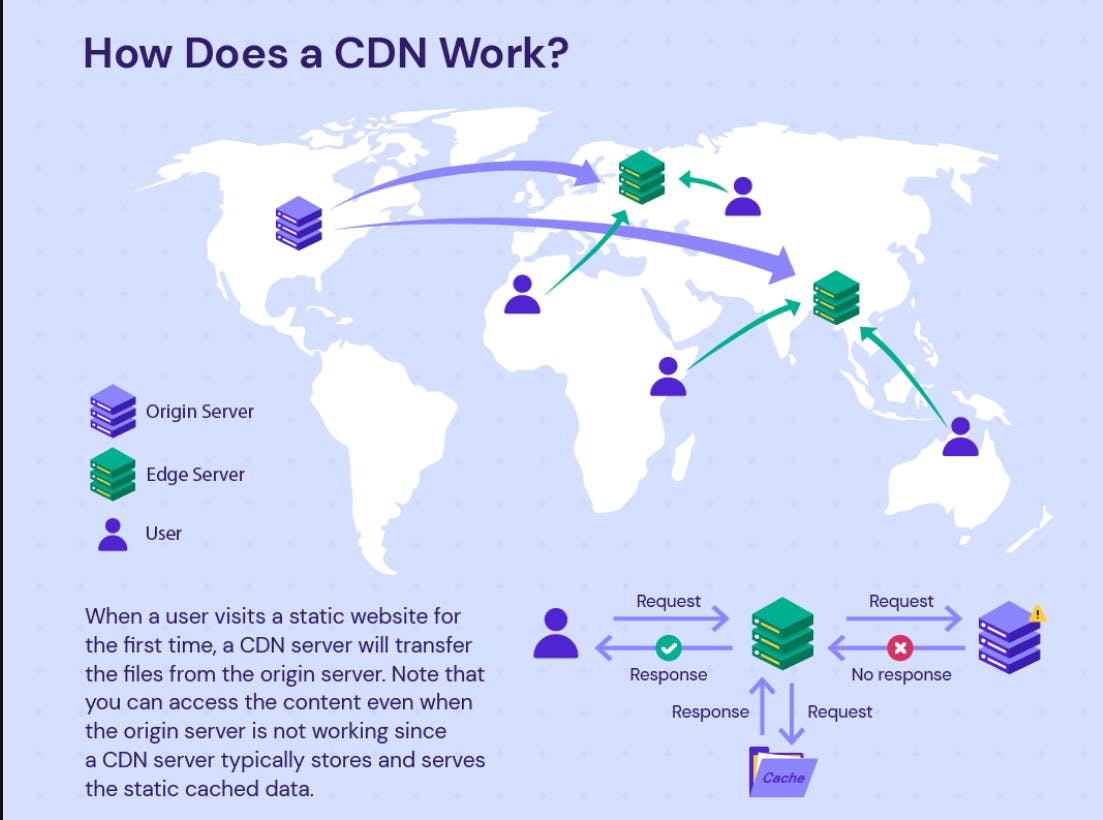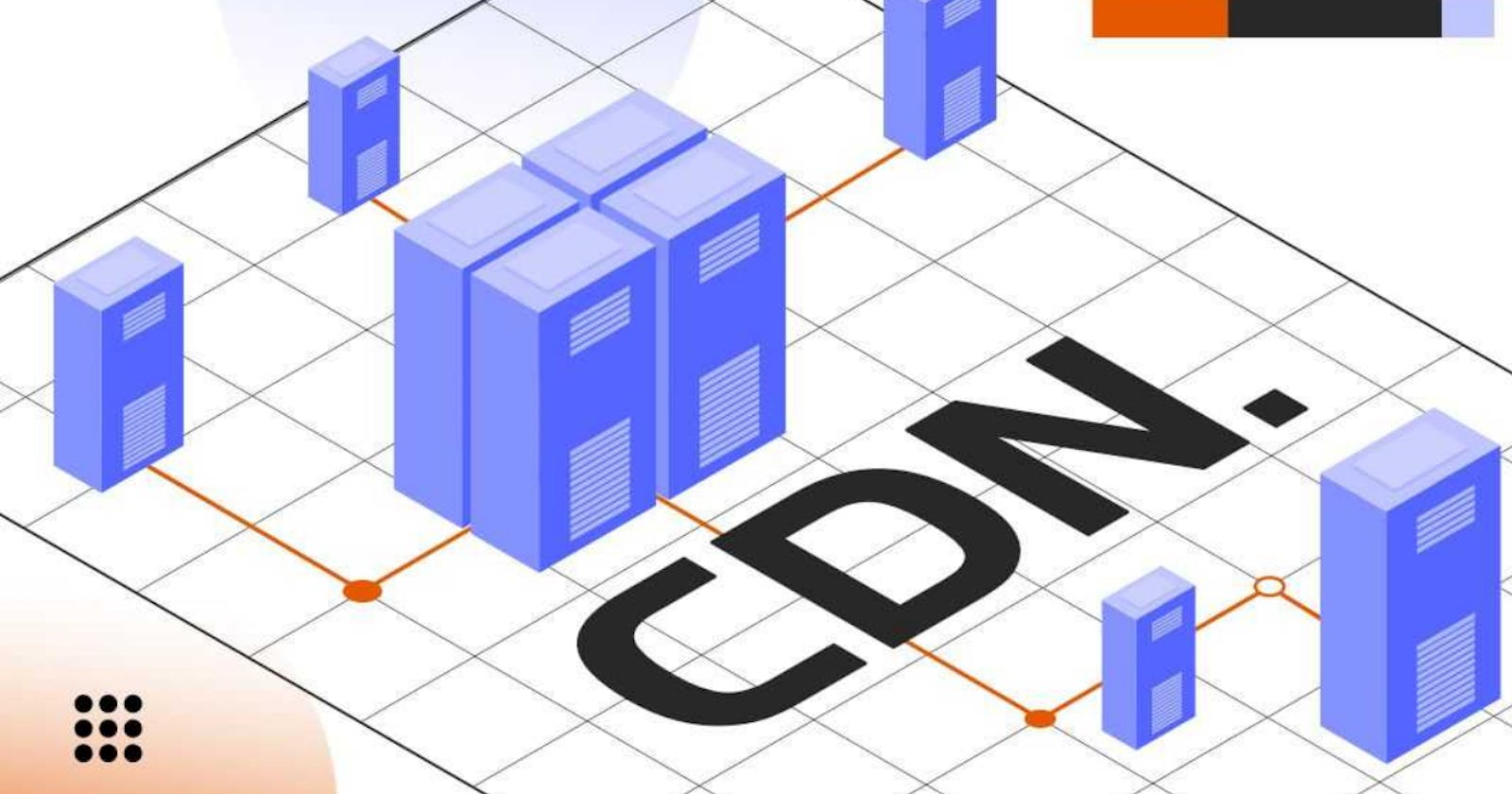Introduction:
In today's digital age, website performance and speed are crucial to the success of any online business. One technology that has gained popularity in recent years for improving website performance is the Content Delivery Network or CDN. In this article, you will get an overview of CDN and why it has gained so much popularity.
Outline:
What is CDN?
How does a CDN work?
When the role of CDN comes into play?
Why CDN?
When not to use CDN?
Conclusion
What is CDN?
Content Delivery Networks are a bunch of servers spread across the globe to serve information. These networks are available for rent to deliver static content quickly to nearby users.
Some examples of CDN are Amazon CloudFront, CloudFlare, and Akamai. They are relatively cheap and have high availability.
How does a CDN work?

Why do we need CDN?
Scenario:
Consider a scenario when a user visits x company's web app. The user is making a server request from Finland whereas the main data center of the company is located in India. So the distance is quite long while making a request which can take a long time for Webapp to load.
Research shows that if there is 2 seconds delay in loading the website, there is a loss of 4% satisfaction for users and a 4.3% loss in revenue per visitor.

Potential Solution for the assumed scenario:
Now the potential solution for this can be creating localized caching for a particular location and device type. The data path is long so we can use the concept of caching. We will cache static pages onto the server, so the server will not call for HTML pages/static content every time.
So we will have a localized cache for Indian users, USA users, and for Finland users. Caching will create a copy from the server with the data we want to show to the user based on his/her location and device.
Now, there are centers created in suppose 200 countries. Coming back to our example, the user now requests from Finland. As the distance is reduced due to localized caching, the web app is optimized and is faster than before. 🎉
Demerit of above potential solution:
- Companies have to afford a huge cost to build caches for different countries.
How they can make sure that all the regulations are being followed?
How they can make sure it serves the latest content?
Tada! 🎉 This is exactly where CDN comes into play.

Why CDN?
Reducing bandwidth costs
Easy to use
Increasing content availability and redundancy
Improving website load times
Improving website security
Protects data
Increases performance
When not to use CDN:
When the website's traffic is coming only from one geolocation.
Your website is already very fast.
Your website gets very low traffic.
Conclusion:
The question of whether you should use a CDN or not depends on the needs of your company. If you have a popular website with high traffic and enough resources, it will pay off. In return for the cost, you will get a faster website and an additional layer of security.
Hope you got clarity from this article about CDN and use cases. Cheers for reading till the end. 🙋♂️
